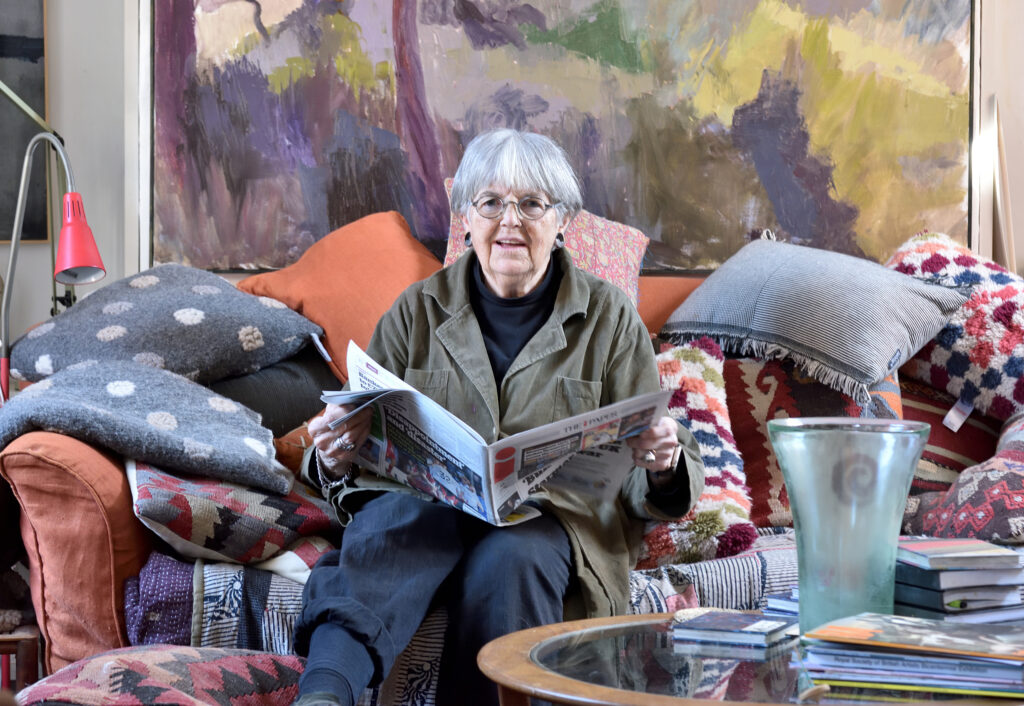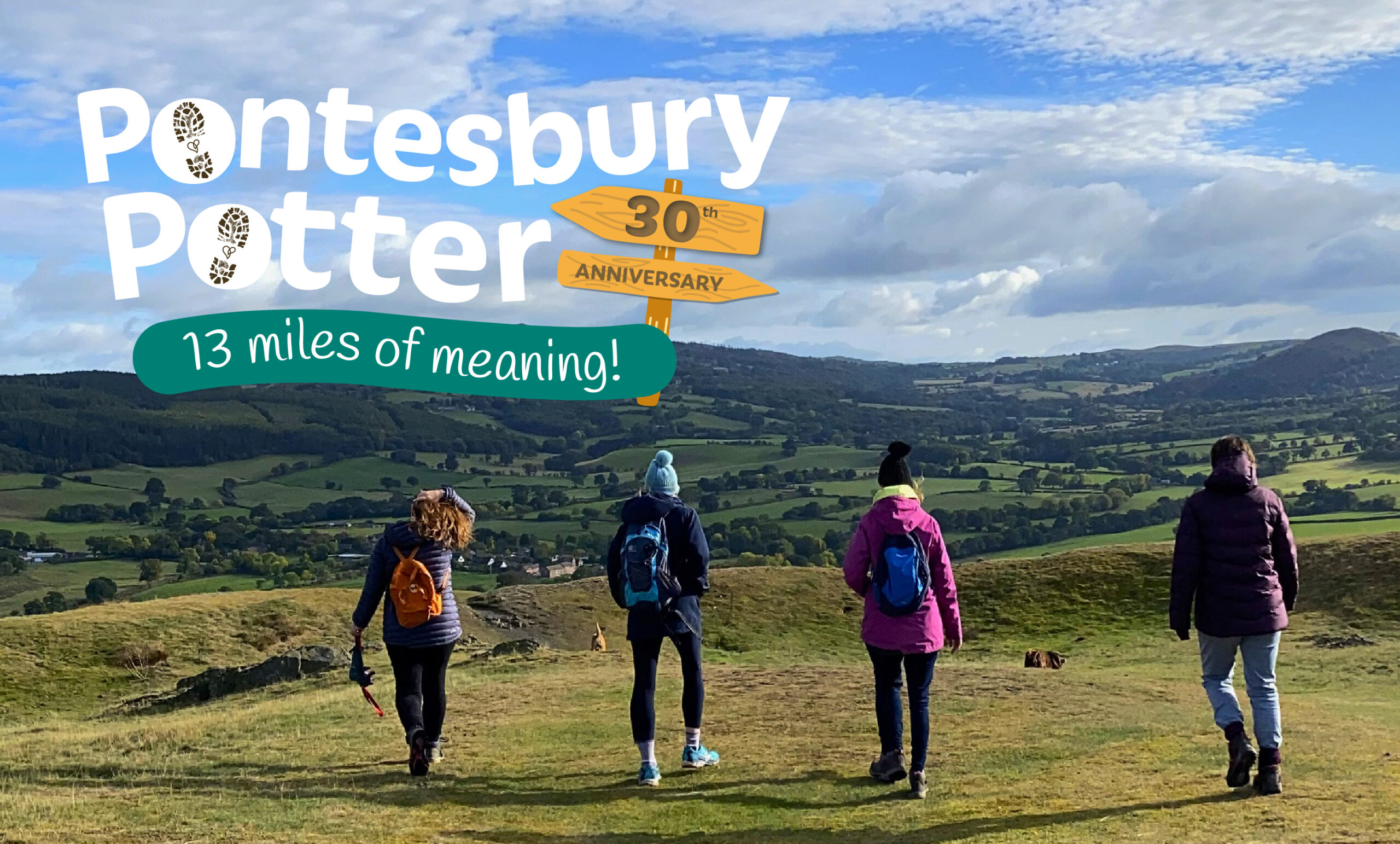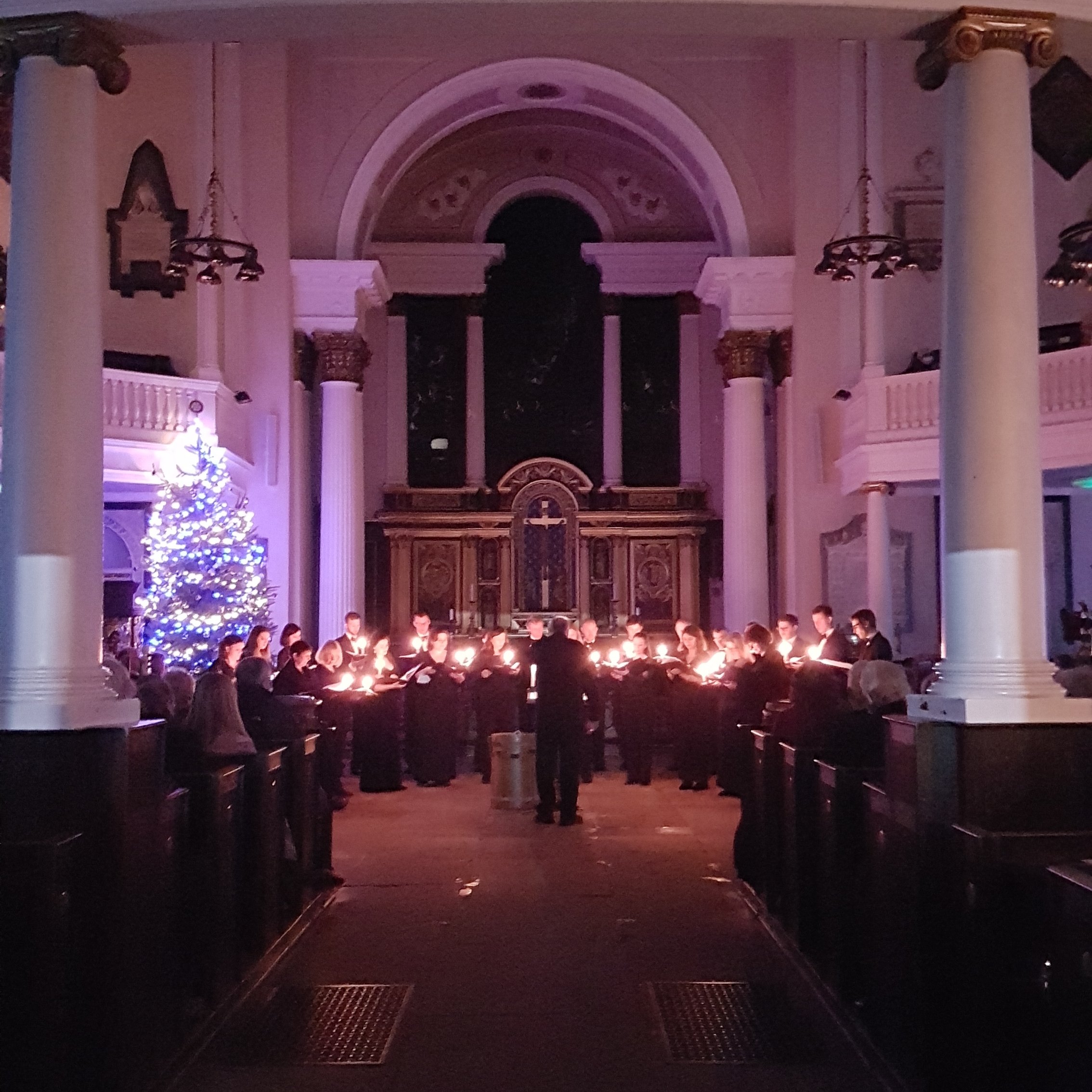Neil Thomas meets an artist whose vivid paintings have clicked with the public – and chats about her work and fascinating back story.
Shropshire’s Sue Campion is a hugely successful artist. Her striking pastels, with their imaginative composition and vivid colours, have always sold well.
Her work is in many private and corporate collections. Shows and exhibitions invariably see paintings snapped up. A show with two other artists last Christmas at the Soden Gallery, in Shrewsbury, saw seven of Sue’s 15 pictures sold.
The Twenty-Twenty Gallery, which was in Much Wenlock between 2003 and 2018 before relocating to Ludlow, sold more than 150 of her pictures!
This certainly gives Sue the edge over one of her great idols, Vincent Van Gogh, who, as far as can be verified, sold only one painting – Red Vineyard at Arles – while he was alive. In fairness, he did die at 37 and his 2,000-plus other works, including nearly 900 oil paintings, have since been auctioned for often eye-watering prices!
Commercially, she has more in common with another inspiration Henri Matisse who was immensely popular with the art-buying fraternity during his life – though he lived to 84 so had a lot of life to sell in.
Sue admits the Dutch post-impressionist and French visual artist – two of the most important and influential figures in the history of Western Art – have had a lasting impact on her.
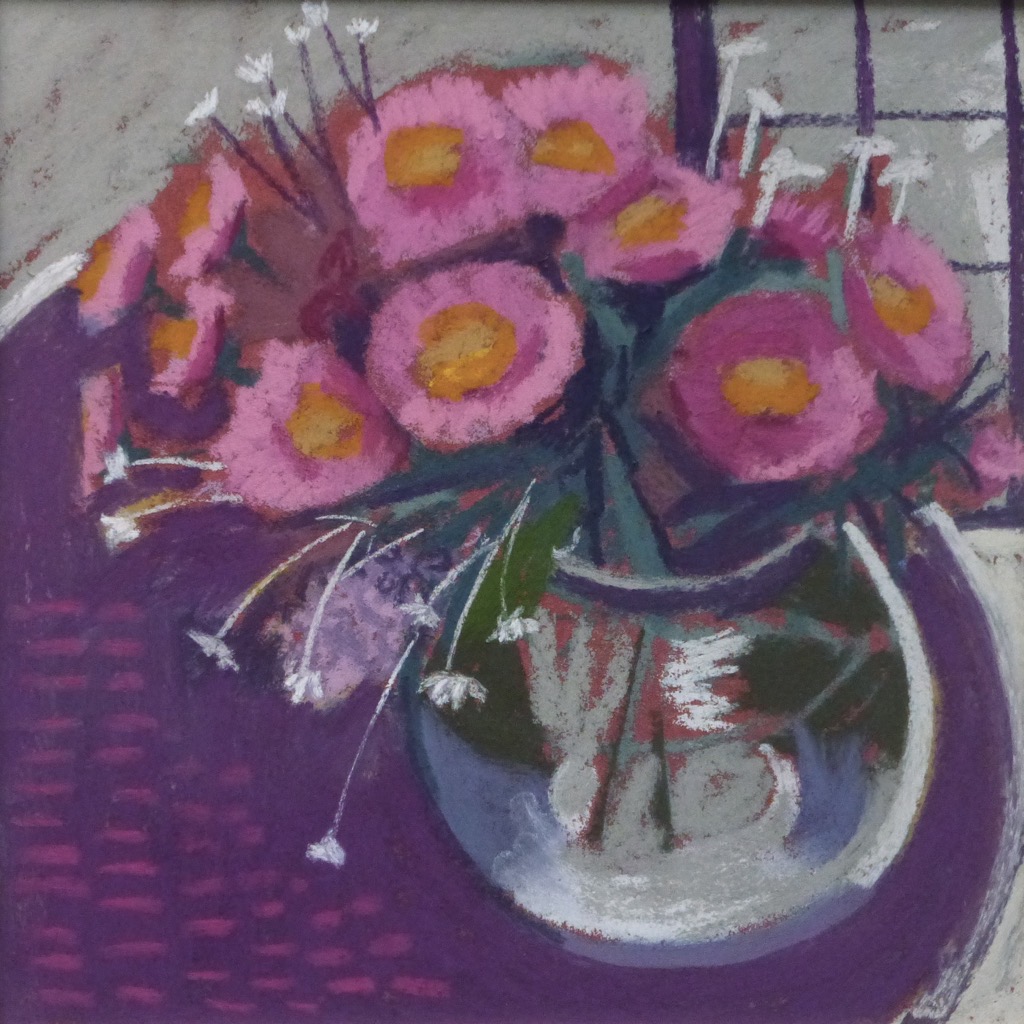
“They were inspirational figures for me. I love their use of colour and the composition of their work. In fact, I’m very much a fan of the post impressionists generally,” she reflects as we chat in the sunlit kitchen of her home – one of a terrace of Victorian villa-style houses in a quiet suburb of Shrewsbury.
Much of Sue’s work is based on her memories of, and reflections on, the many places she has travelled to and lived in across the world – from Mediterranean pine trees and sandy bays, to the verdant springtime of Britain and the Shropshire Hills near her home. Some of her more exotic work flowed from her time living in Nerja, on the Costa del Sol in Spain in the late 1960s.
Though she has taught portrait painting and drawing, she mainly focuses on landscapes, seascapes and still life. Nature features prominently, with many studies of birds and flowers.
“I especially love nature that has had the hand of man on it – ploughed fields, boats and so on.”
Though Sue has spent the past 24 years in Shrewsbury she is, in truth, a citizen of the world. She has lived in Spain, Belgium and the USA, as well as places in the UK as diverse as London, Brighton, Manchester, Nottingham and Pembroke.
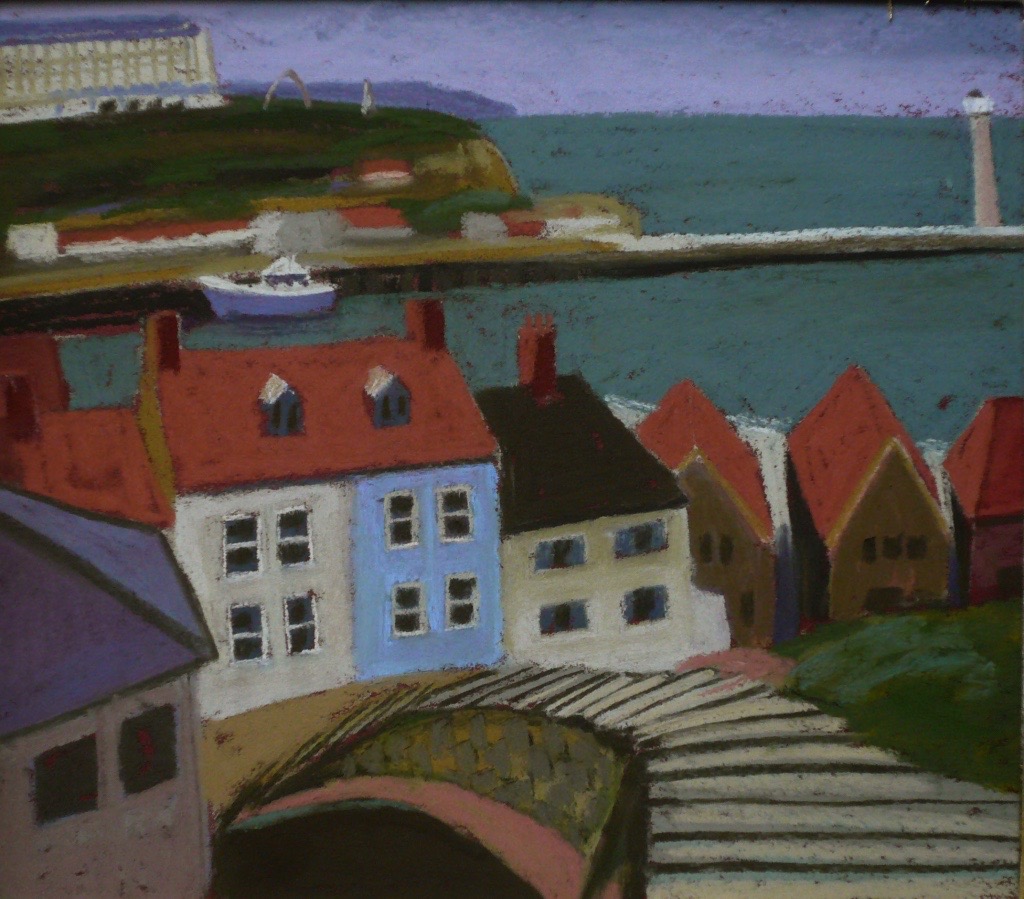
“I counted them up a while ago and reckoned I’d had 32 different addresses before I moved here to Shrewsbury.
“I have loved travelling over the years. I think it gives you so many rich experiences and you discover so much about yourself along the way.
“The world offers so much variety. At Red Rock County in Arizona, for instance, I remember it being so hot and dry that the second the paint hit the paper it dried instantly.”
She doesn’t see herself leaving Shrewsbury, though. “I just love Shropshire; it’s a beautiful county. It has the most wonderful and varied landscapes. The colours are beautiful, wonderful greens. I love the changing seasons here.”
She is very much a colourist, characterised by an intense, vivid palette, using pastels, and occasionally oils, to combine rich shades with a strong sense of pattern and design.
During her long career, she has had more than 25 solo exhibitions and more than 30 group exhibitions across the UK.
Her work has sold well pretty much from the day she embarked on a career as an artist.
“I have a bit of business sense which helps. I’m very professional. If I say I will deliver a painting on Saturday, I deliver it on Saturday, fully-framed,” she explains. “You have to be on the ball and it is surprising how many artists aren’t. I’ve come across some very talented artists and I think ‘you should be making a good living out of this and you’re not’. It can come down to luck but having a head for business is also a big part of it. I’ve always made a living out of art.”
Her studio is a light-filled sunroom in a large garden so peaceful she often paints to a soundtrack of birdsong.
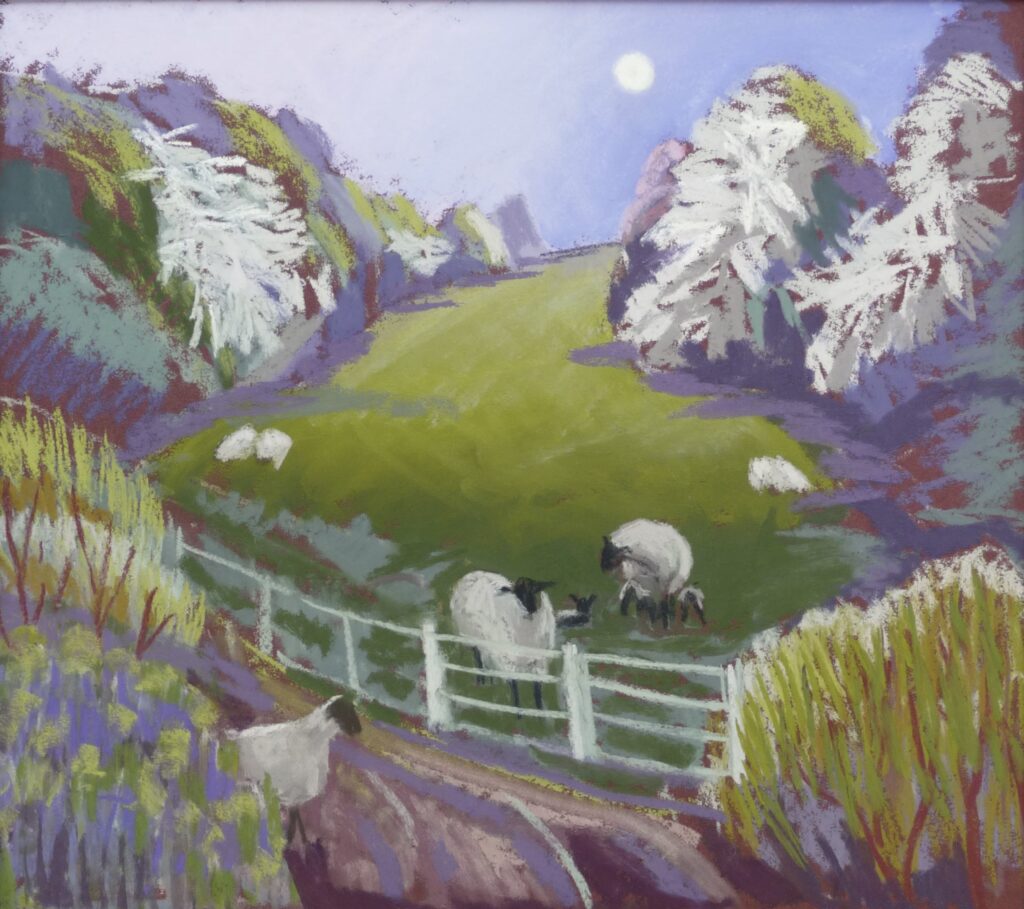
She loves country walks with friends and finds inspiration for her paintings at every corner, which is why she makes sure to take her camera with her.
Our largely bucolic county, though, is a far cry from Sue’s childhood in Streatham, a bustling part of south London, and life as an 18-year-old with her own apartment on the fashionable King’s Road in West London during the Swinging Sixties.
Sue was educated in a convent school and raised a catholic, admitting that she rebelled as a teenager against that aspect of her upbringing.
“My parents inherited chemist shops in Fulham Road and King’s Road with flats above and I had one of the flats,” she recalls. “It was a great time to be young, a generally carefree time, although of course we had the bomb and Aldermaston,” she recalls, referencing the marches of the late 1950s and 1960s, organised by CND (Campaign for Nuclear Disarmament), which saw thousands of demonstrators walk 50 miles from London to the Atomic Weapons Research Establishment in the Berkshire village of Aldermaston.
“I loved being in London in the heart of that era,” Sue says. “It was a time when you’d see famous faces in the streets, shops and restaurants, just mingling with everyone else and everything seemed very relaxed. You’d turn up at a party and pop stars would be there, it was very informal. There didn’t seem to be the need for squads of bodyguards – I suppose they didn’t need to worry about people snapping away on mobile phones every minute.”
It was a time when Sue found herself cooking a meal for Rolling Stone Bill Wyman, and being in the room when Led Zepplin recorded Stairway to Heaven. “I didn’t even know who they were. They weren’t particularly famous at that stage.”
She was friends with Pink Floyd a year or so before their 1967 breakthrough singles Arnold Layne and See Emily Play. “A friend was going out with Richard Wright (the band’s keyboard player/vocalist).”
When Sue worked at Terence Conran’s original Habitat store in Fulham Road, Chelsea, it was not unusual for royalty and celebrities to visit.
“I can remember Princess Margaret and Marlene Dietrich coming in.”
Indeed, the first half of Sue’s working life was in retail – having trained as a display artist, she became a freelance window dresser.
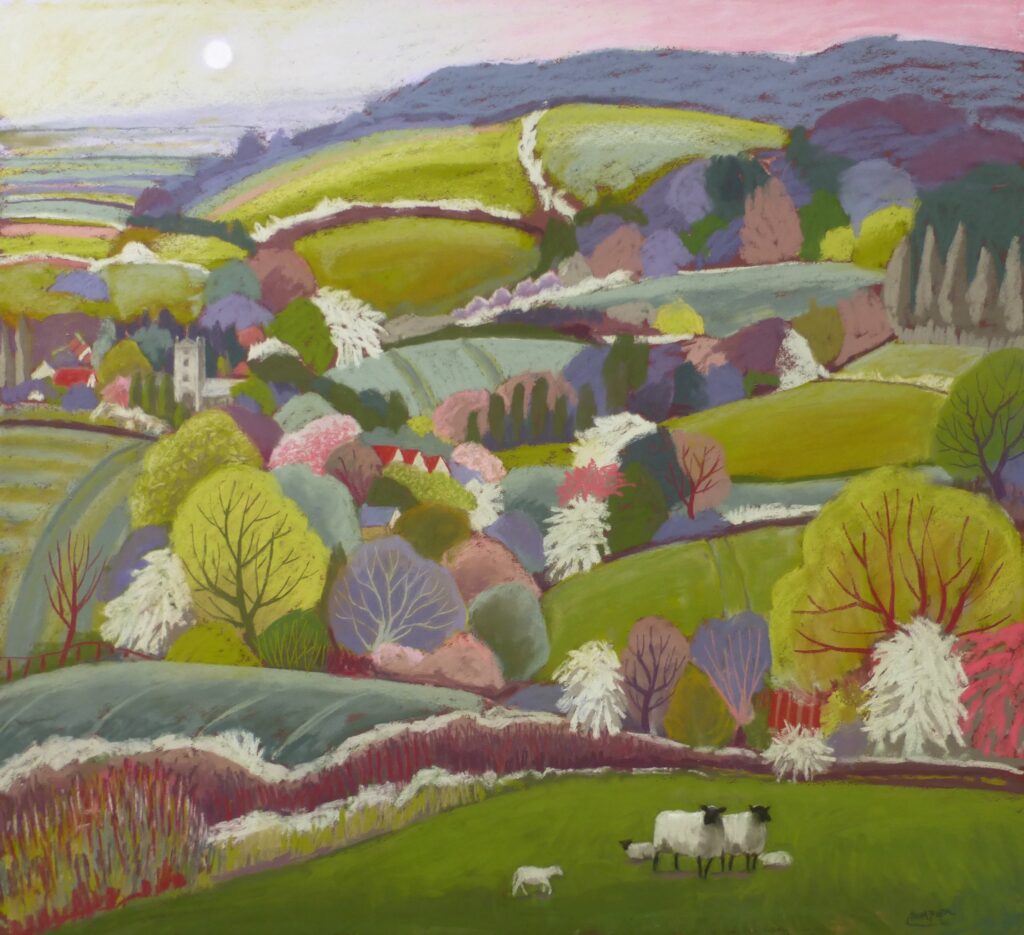
“The window dressing course was in the same building as St Martin’s Art School in Charing Cross Road – right in the heart of it all, and not far from Chinatown and Soho, all very exciting.”
Sue trained to be an artist in her mid-40s. “I had always loved art since my school days. Dad was very talented and wanted to be a painter, musician and actor, though it never happened.”
Both she, elder sister Moya and younger brother Jim have clearly inherited the gene – Moya, who lives in Brisbane, is a talented amateur painter while for 21 years Jim and his wife Sue ran the world music festival Musicport in Whitby, North Yorkshire. It celebrates its 25th anniversary this October and they are still involved, albeit from more of a back seat.
A major cloud over family life was their father’s ruinous betting habit.
“Dad was a gambler – horses, casinos and so on. It’s a terrible addiction, the illusion that the big win is always just around the corner. He lost all the family’s money. It possibly explains why I was determined early in life to value money and develop a head for business.”
Sue initially trained in Birmingham for a year in the mid-1980s – living in Shrewsbury. She briefly moved to Pembroke in southwest Wales but found life too quiet so relocated again, this time to study for three years for a degree in Fine Art at Nottingham Trent University. She graduated in 1990 – and her work started selling straight away.
“I was very lucky. My work was noticed at the Degree Show for new graduates, I got work into Christies and Bonhams and ended up being showcased in catalogues which was very good for me.
“I was contacted by a gallery in Pimlico; the lady who ran it bought one of my pictures so I did an exhibition there.”
David Wolfers, who ran the celebrated New Grafton Gallery in Bond Street in Mayfair, liked her work and when he moved to Barnes, a wealthy area in southwest London, she exhibited her work there.
Wolfers’ assistant Sarah Russell went on to start the Russell Gallery in 1995 in Putney, another affluent area of southwest London with no shortage of well-off art lovers.
“She liked my work, we became friends and I’ve exhibited there ever since,” Sue says. “I have had a show every two years in the Russell Gallery for past 30 years and I have done very well out of it.
“I’m still shocked by the number of people who want to own my paintings,” she says with a broad smile.
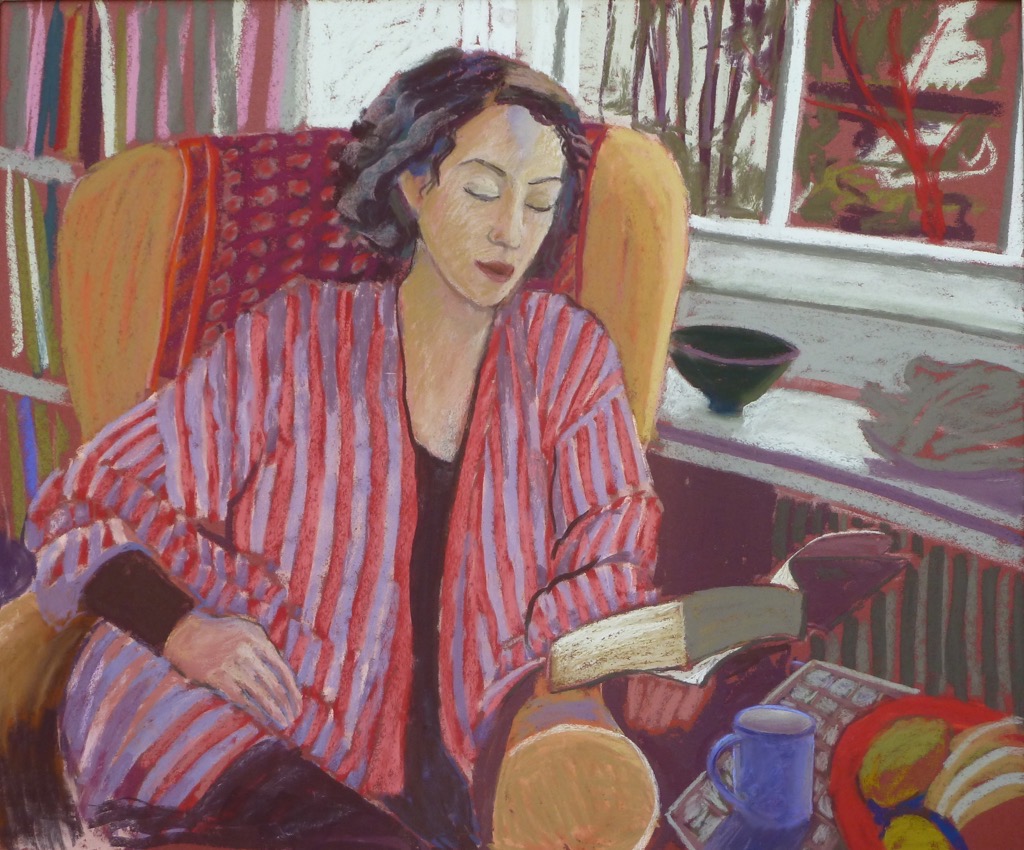
Sue turned 81 in January but shows little sign of slowing down, despite a heart attack three years ago.
“I socialise in the mornings then usually go into my studio at 1pm and work in the afternoons.” She often has her two ginger cats – brothers Teddy and Bertie– for company.
Her output remains prolific. “A friend once joked that I was running a factory,” she says with a chuckle. Indeed, she produces so much wonderful art that she keeps a detailed annual log of her paintings, which averages out at more than 80 a year. Given such a volume, the standard remains truly impressive – not that Sue, you imagine, would let anything slipshod out of the studio.
She is happy to impose deadlines on herself for new paintings – she has a major exhibition lined up for November at the Russell Gallery and is in talks for a show at the Soden Gallery.
She reflects that both her parents died in their 60s from cancer and is determined to get the most out of every day. She exhibits a strong political and social conscience and is more than happy to debate what is right and wrong with society. Yet she exudes an overall calm. Buddhism classes, in which she learnt the art of meditation, have undoubtedly helped. Fundamentally, though, you get a sense that here is a woman who is comfortable in her own skin. Happy to live alone – she was married briefly, “disastrously” in the 1960s – she enjoys her own company, though her many friends ensure she is far from ‘the lonely artist in the garret’ of popular myth.
She also has the respect and admiration of her peers as an elected a member of the Royal Society of British Artists for the past 18 years.
Into her ninth decade, Sue Campion has a full life. She has the satisfaction of making a living out of something she loves, knowing her work is widely appreciated. She is healthy enough to take country walks, remains sharp of intellect, articulate and interested in what is happening in the world. And in her eyes, you a detect that certain spirituality so often to be found in those whose lives are centered on the creative arts.

